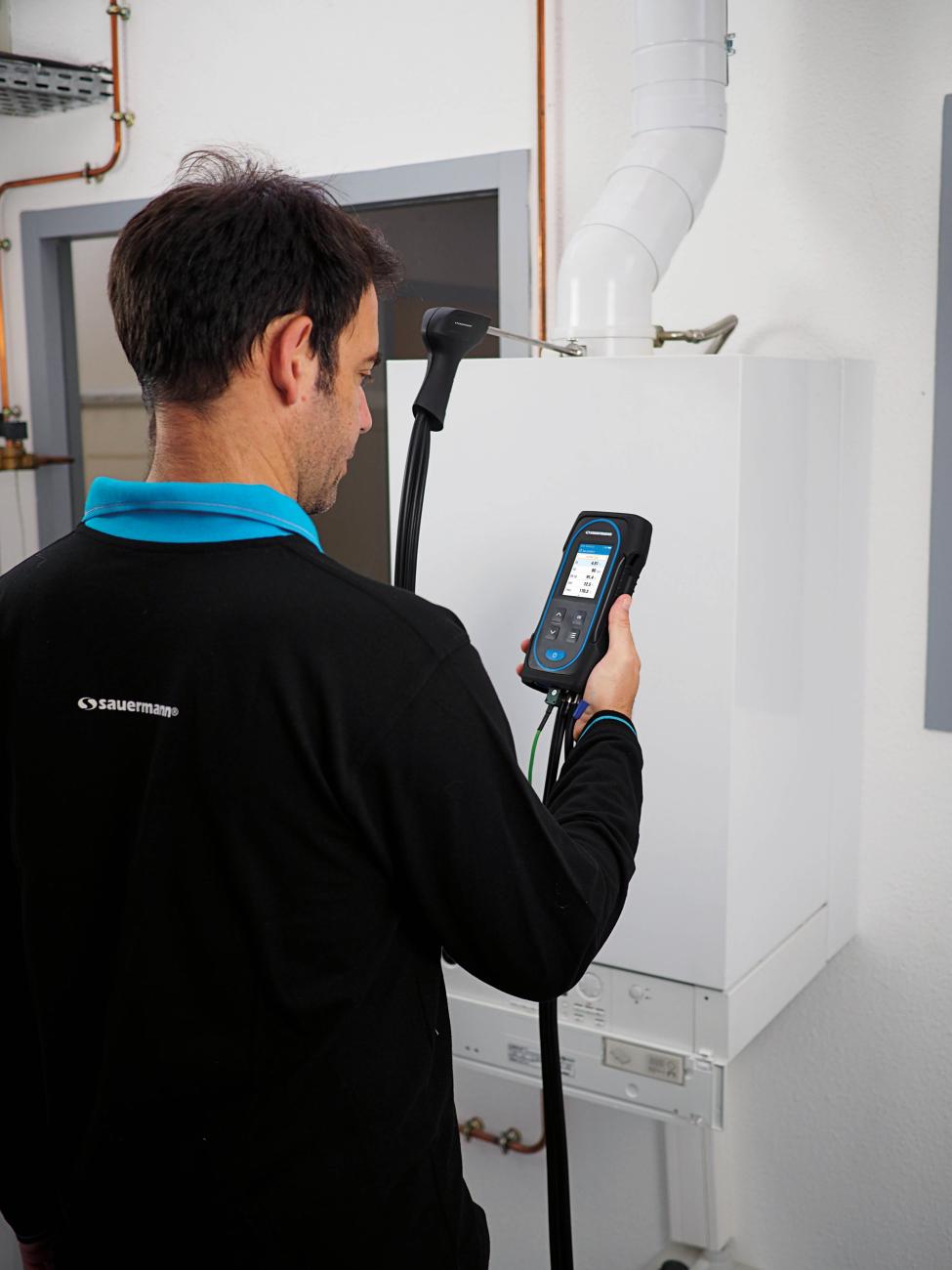Measuring Combustion Efficiency on Atmospheric Boilers & Furnaces
Combustion efficiency is a measurement of how well any given fuel is being burned and converted into useful energy (e.g.: heat). The calculations are based on 3 MAJOR Factors:
1. Chemistry of the burned Fuel (e.g. Propane, Natural Gas, Oil, etc)
2. The CO2 percentage by volume after the combustion process
3. The NET temperature between the Stack Gas & the Primary Air being used
Since the NET Temperature is a KEY parameter in Combustion Efficiency calculations, this will explain how the ∆T is measured. When testing most common Atmospheric boilers, furnaces, & water heaters, our Combustion Analyzers use its own Built-In Internal temperature sensor to measure the Room’s actual Ambient Temperature (Ta) because the room air is used as the Primary Air being fed into the system for combustion. When the probe is placed in the stack, the analyzer measures the Flue Stack Temperature (Tg) simultaneously with the ambient air. As listed above, the Combustion Efficiency is calculated by the NET differential temperature of the Primary Ambient Room temperature and the Flue Stack Temp.
See this example: (E.g. 392 °F (200 °C) in the Stack – (minus) the Ambient 68 °F = ∆T of 324 °F (20 °C = ∆T of 180 °C)). Our combustion analyzer automatically takes this ∆T calculation which is then also automatically combined with the analyzer’s CO2 reading and the Chemistry of the type of fuel being burned (Natural gas, Oil, etc) to fully calculate, display and record the Appliance’s Combustion Efficiency.

Atmospheric System Example (Natural Gas Appliance)
∆T of 324 °F (180 °C)
If CO2 is 8%, based on ∆T of 324 °F (180 °C) & Natural Gas chemistry then Combustion Eff = 89.4 %
Stack Temperature = 392 °F (200 °C)
& CO2 Measurement = 8%
By default, analyzer uses Internal Temperature Sensor for Room Air Temperature = 68 °F (20 °C)
